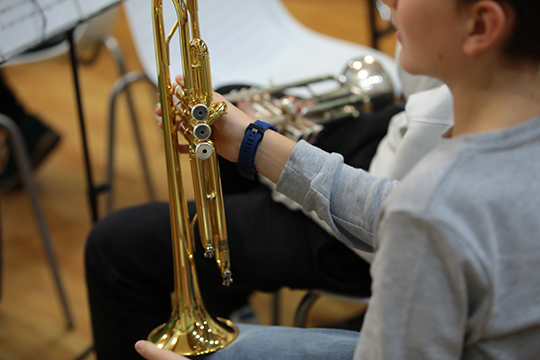Many years ago, I was speaking with a band director who posed a great question to me. He said, “I am so careful to teach correct posture and playing position to my beginners. I constantly remind them of its importance, chastise them when it’s wrong, and praise them when it’s correct. I am on them about it all the time. And yet, often it gets worse rather than better. Why?” I said, “I’m guessing you have fairly long lessons with your beginners and that you try to keep them playing as much as possible during that time. He replied, “They are forty-five minutes long and I try to have them play the whole time.” My next words surprised him, to say the least: “I think your dedication to keeping them playing for that long a stretch is what’s causing much of the problem.” I went on to explain that my feeling was that we should have beginners play for short intervals of time. Picture a gaggle of flutes all playing Twinkle, Twinkle Little Star in unison. They start with perfect posture and playing position. By the end of the piece, however, those little arms start to get tired, and our picture-perfect posture goes out the window. Then, without missing a beat, their dedicated teacher says, “Do it again.” When that second playing comes to an end, our students hear those words that make them cringe: “One more time!” Fatigue causes the problems to manifest themselves and to get worse. Our zeal for having them practice playing so rigorously leads them to poor posture and playing position problems. Put simply, their muscles have not developed enough to maintain that perfect posture and position for that long, so they end up “practicing” poor habits in an effort to survive those seemingly endless repetitions of the tune.
The answer is to keep them on task the entire time, but only have them playing for short intervals. Try having them alternate playing a phrase with clapping, humming, counting, or singing a phrase. That way, we can demand – and they will practice – perfect posture and playing position whenever they are playing. Once their muscles have built up the stamina to play for longer periods of time while still maintaining that excellent posture and position, those intervals of playing time can get longer. Sometimes just remembering how tiring it was to hold your instrument for long stretches of time when you were a beginner can yield some pretty powerful information we can use to help our students succeed in those crucial first weeks of playing.
Peter Loel Boonshaft, Director of Education
KHS America
The content of this Blog article or Banded Story is the intellectual property of the author(s) and cannot be duplicated without the permission of KHS America and/or the author(s). Standard copyright rules apply.



 We look forward to the evolution of this exciting program, and welcome feedback on how we can further enhance the work that you do in music education.
We are excited to offer your program the opportunity to join the KHS America Academic Alliance today.
We look forward to the evolution of this exciting program, and welcome feedback on how we can further enhance the work that you do in music education.
We are excited to offer your program the opportunity to join the KHS America Academic Alliance today.